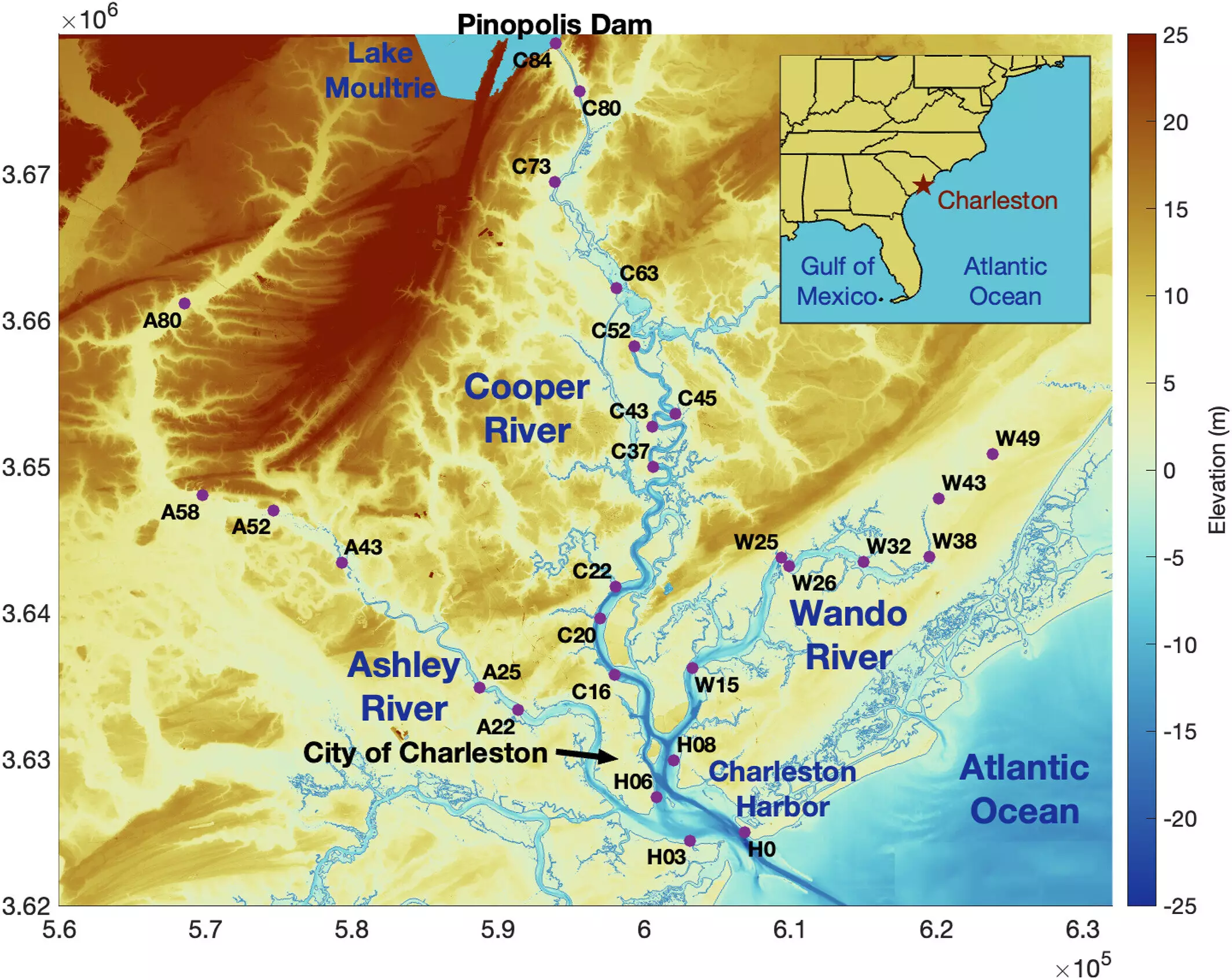The traditional wisdom that constructing dams can effectively mitigate flooding is facing new scrutiny. A recent study revealed that such infrastructural projects, particularly those erected in coastal estuaries, may instead exacerbate flood conditions. This perspective is crucial as climate change continues to impact coastal regions worldwide, prompting a surge in dam construction intended to combat severe weather, saltwater intrusion, and rising sea levels. Through comprehensive analysis, this research prompts a reevaluation of the relationship between dams and coastal flood dynamics.
Estuaries, where river waters mingle with ocean tides, are often considered key areas for flood management. The unique funnel-like morphologies of these estuaries influence the movement of water, especially during storm surges. Steven Dykstra and his collaborators undertook a study utilizing data from Charleston Harbor in South Carolina, a location that has experienced significant flooding. They discovered that the effectiveness of dams in preventing flooding is not straightforward; environmental conditions and the specific design of the estuary are crucial factors that can either mitigate or aggravate flood risks.
The study elucidates that coastal dams can reflect storm surge waves, which can compound the flooding problem by amplifying water levels as they navigate a narrow estuarine channel. This phenomenon is likened to the sloshing of water in a bathtub, where certain wave frequencies can lead to water spilling over a container’s edge. The implications of this observation are significant, as they suggest that rather than mitigating flood risks, coastal dams might actually intensify them under certain circumstances.
In examining over a century’s worth of data from Charleston Harbor, Dykstra’s research team employed sophisticated computer modeling techniques. By simulating both dammed and natural estuary environments across 23 coastal regions, they were able to assess how changes introduced by human-made structures like dams affect water dynamics. Their analysis confirmed that the shape of the basin, influenced by the presence of a dam, plays a pivotal role in determining how storm surges and tidal flows operate.
The revelation that waves can grow in amplitude when conditions are right casts new light on the effectiveness of dams in flood management. Instead of serving as a protective barrier, these structures can sometimes lead to heightened risks of overflow, particularly in areas further inland. The study challenges the common assumption that moving away from the coast equates to safety from coastal flooding effects, a misconception that can have dire consequences during extreme weather events.
Influence Beyond the Coastline
One of the more alarming findings of the study is the recognition that areas well inland from coastal structures can still be significantly impacted by oceanic conditions facilitated by human construction. In Charleston, for instance, storm surges have been recorded over 50 miles inland — a critical reminder of the sprawling effects of climate-induced flooding. Dykstra emphasizes that many residents in these areas may be unaware of their vulnerability, particularly in light of rising sea levels which increasingly encroach on traditionally safe zones.
This situation raises ethical questions regarding infrastructure planning and community risk awareness in the face of climate change. Urgent communication and education are essential for communities to understand their exposure to coastal flooding, rather than relying on outdated assumptions about distance from the coast equating to safety.
The findings of this study urge a reevaluation of dam usage in the context of coastal flood mitigation. In an era where climate change is intensifying challenges to communities across the globe, it is essential to adopt a more nuanced understanding of how infrastructure affects environmental dynamics. Policymakers and city planners must critically assess the implications of dam construction on flood risk, ensuring that such measures do not inadvertently create more significant challenges down the line. Developing resilient and informed strategies for flood management is not only prudent but imperative to safeguard communities in an increasingly unpredictable climate.


Leave a Reply